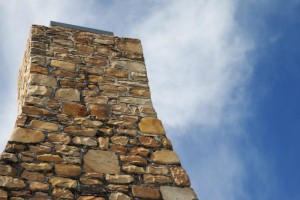If your home has a fireplace, regular maintenance is an important part of keeping it in good condition as well as keeping your family safe. One of the best things you can do to maintain your chimney is to have a chimney inspections.
Chimney inspections are a great way to ensure that your chimney and fireplace are in good condition and have no potential safety or structural issues. When a chimney is regularly inspected, deterioration such as masonry damage can often be spotted early before it significantly damages the chimney. Likewise, chimney inspections are also a useful tool when diagnosing ongoing chimney issues such as leaks or chimney odors.
The National Fire Protection Agency states that, “Chimneys, fireplaces, and vents shall be inspected at least once a year for soundness, freedom from deposits, and correct clearances. Cleaning, maintenance, and repairs shall be done if necessary.” In accordance with this standard, three levels of chimney inspections were created and standardized by the NFPA.
Level 1 inspection
A Level 1 chimney inspection is the most basic – and most commonly needed – type of chimney inspection. Level 1 inspections are recommended for homes when the fireplace is not experiencing any issues and has not changed in any way or been damaged.
During the inspection, a certified chimney sweep will visually inspect all accessible portions of the interior and exterior of the chimney. This also includes examining the masonry for signs of water damage as well as checking the flue for potential creosote buildup.
Level 2 inspection
A Level 2 chimney inspection gives technicians a more in depth look at your fireplace and chimney system. Level 2 inspections are recommended when there has been a change to your fireplace system. This can include adding an insert, switching fuel sources, having the chimney relined, or damage from a natural disaster such as an earthquake. Likewise, a Level 2 inspection may be required if you are preparing to put your home on the market.
A video scan using closed circuit cameras may be used during a Level 2 chimney inspection. This can give technicians a more complete look at the difficult to access parts of the chimney and flue. In addition, surrounding areas such as crawlspaces, basements, or attics may need to be accessed.
Level 3 inspection
A Level 3 is the most in depth and invasive type of chimney inspection. Level 3 inspections are typically only recommended in cases of serious structural damage, such as a chimney fire or other catastrophic event. A Level 3 inspection often involves removing part of the chimney such as the chimney wall or chimney cap. Oftentimes, this may cause damage to the walls, ceilings, or siding of your home. Because of this, Level 3 inspections are not taken lightly and are only recommended when seriously needed.
“A chimney inspection is like an annual dental check-up,” Director of Education for the CSIA Ashley Eldridge said. “It’s preventative maintenance that helps minimize potential hazards.” If you need a chimney inspection, contact Mason’s Chimney Service today!

